01
What is Iter
ITER, which in Latin means ‘the way,’ will be the world’s biggest experiment on the path to fusion energy. It will be the first fusion device to generate more heat than used to start the fusion reaction, relying on an impressive range of technologies which are essential to deliver fusion power in future.
The world’s biggest experiment on the path to fusion energy.
Europe is the host of the project which is currently under construction in Cadarache, south of France
ITER is a global scientific partnership of unprecedented scale bringing together half of the world’s population: China, Europe, Japan, India, the Republic of Korea, the Russian Federation and the United States.
ITER is a global scientific partnership of unprecedented scale bringing together half of the world’s population: China, Europe, Japan, India, the Republic of Korea, the Russian Federation and the United States.
02
The technology
in a nutshell
in a nutshell
ITER will be the largest Tokamak device to test magnetic confinement to produce fusion energy. It will count millions of components, operated by cutting-edge systems, so as to measure its performance, and draw lessons for a future commercial fusion power plant.
03
How will the ITER
machine work ?
machine work ?
Once the fusion fuel is in machine, powerful heating systems will raise the temperature to 150 million °C in order to generate a super-hot plasma, which will be housed inside a doughnut-shaped chamber. To avoid any contact between the hot gas and the walls of the chamber, gigantic magnets will be cooled down to -269 °C to become superconductive so as to create a massive magnetic cage around it. Beneath the surface of the components exposed to the high temperatures, pipes with cooling water will be installed to capture the heat which eventually will be diffused through cooling towers.
500 MW for
about 7min
about 7min
ITER will produce a significant amount of heat in the range of 500 MW for about 7 minutes.
10 times more heat
ITER will generate 10 times more heat than used to start the fusion reaction.
04
Welcome to the ITER worksite
The platform measures 42 hectares and is one of the largest man-made levelled surfaces in the world. There are 39 buildings, facilities and power supplies which will be needed to operate the biggest fusion machine. More than 3000 people are contributing to ITER’s civil engineering works.


The home of the ITER machine—a building of seven floors that sits 13 m below the
level of the platform and 60 m above.
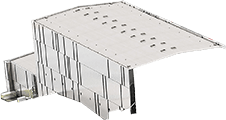
The immense workshop where various ITER components will be assembled.

ITER is connected to France’s national grid. Thanks to the ITER transformers the 400kV
received will be converted to 22 KV and 66 KV for the needs of the ITER site and
components.
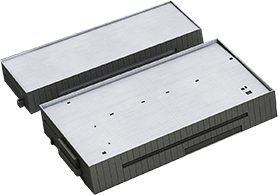
Where the ITER machine will be operated.
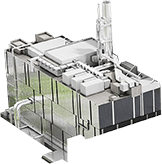
Where the fusion fuel (deuterium and tritium) will be stored and handled.
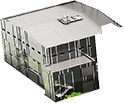
Where the necessary radio frequency to heat the plasma will be generated.

Will remove the heat from the ITER vacuum vessel, its plasma-facing components and
systems.

Where Europe is manufacturing four of its PF coils measuring between 17 and 25 m in
diameter and weighing between 200 and 400 t.

The massive refrigerator of the ITER machine. It houses the compressors, coldboxes,
cryogenic tanks and auxiliary systems that will produce cold Nitrogen, and cool liquid
Helium

Where the information received by the instruments acting as the “eyes” and “ears”
inside the machine will be interpreted, analysed and processed.
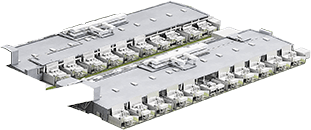
Where the AC/DC converters, and associated systems will convert the industrial 22 kV
AC into high voltage DC power that is used by the ITER magnets.